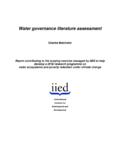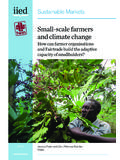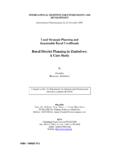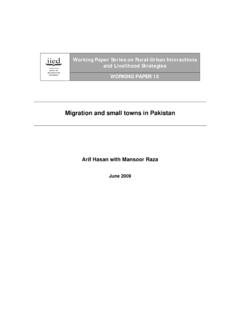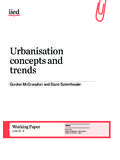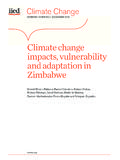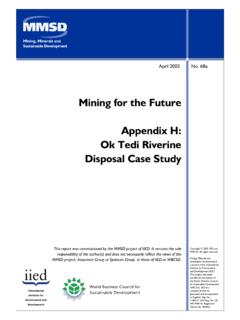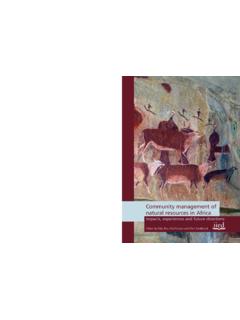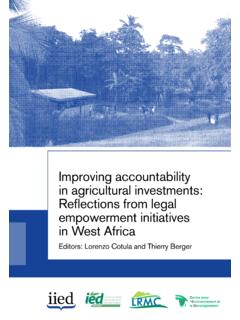Transcription of AN OVERVIEW OF THE IMPACT OF MINING AND MINERAL …
1 water ENVIRONMENT &FORESTRY TECHNOLOGY AN OVERVIEW OF THE IMPACT OF MINING AND MINERAL processing operations ON water RESOURCES AND water QUALITY IN THE zambezi , LIMPOPO AND OLIFANTS CATCHMENTS IN SOUTHERN AFRICA Peter Ashton 1, David Love 2, Harriet Mahachi 3 and Paul Dirks 3 1 CSIR-Environmentek, Box 395, Pretoria 0001, South Africa 2 Geology Department 3 MINERAL Resources Centre University of Zimbabwe, PO Box MP167, Mount Pleasant, Harare, Zimbabwe August 2001 MINING , MINERALS AND SUSTAINABLE DEVELOPMENT PROJECT, SOUTHERN AFRICA GEOLOGY DEPARTMENT UNIVERSITY OF ZIMBABWE MINERAL RESOURCES CENTRE UNIVERSITY OF ZIMBABWE ii AN OVERVIEW OF THE IMPACT OF MINING AND MINERAL processing operations ON water RESOURCES AND water QUALITY IN THE zambezi , LIMPOPO AND OLIFANTS CATCHMENTS IN SOUTHERN AFRICA COPYRIGHT RESERVED This technical report documents an assignment that was carried out for the MINING , Minerals and Sustainable Development (SOUTHERN AFRICA) Project [MMSD(SA)] and remains the property of MMSD(SA).
2 However, the intellectual property and insights acquired during the execution of this assignment remain vested in the authors of this report. No part of this report may be reproduced in any manner without written permission from MMSD(SA). When used as a reference, this report should be cited as: Ashton, , D. Love, H. Mahachi, Dirks (2001). An OVERVIEW of the IMPACT of MINING and MINERAL processing operations on water Resources and water Quality in the zambezi , Limpopo and Olifants Catchments in Southern Africa. Contract Report to the MINING , Minerals and Sustainable Development (SOUTHERN AFRICA) Project, by CSIR-Environmentek, Pretoria, South Africa and Geology Department, University of Zimbabwe, Harare, Zimbabwe.
3 Report No. ENV-P-C 2001-042. xvi + 336 pp. MINING , MINERALS AND SUSTAINABLE DEVELOPMENT PROJECT, SOUTHERN AFRICA iii AN OVERVIEW OF THE IMPACT OF MINING AND MINERAL processing operations ON water RESOURCES AND water QUALITY IN THE zambezi , LIMPOPO AND OLIFANTS CATCHMENTS IN SOUTHERN AFRICA EXECUTIVE SUMMARY The original Terms of Reference for this study (Research Topic 4) were extremely broad and required an OVERVIEW of all MINING impacts on the biophysical environment throughout southern Africa. Though this objective was desirable, and would provide an excellent background for management strategies in each of the SADC countries, it was unrealistic in view of the time and budget constraints.
4 Therefore, the main focus of this research topic was restricted to water resources, in particular water quality, and attention confined to three key river basins, namely the zambezi , Limpopo and Olifants basins. Whilst the revised Terms of Reference remain challenging, they represent a compromise that enabled a useful body of work to be produced. The Project Team who conducted the investigation and report writing for Research Topic 4 comprised the following individuals: Dr Peter Ashton CSIR-Environmentek, South Africa Research Co-ordinator and Project Manager; Mr David Love MINERAL Resources Centre, University of Zimbabwe Principal Investigator; Professor Paul Dirks MINERAL Resources Centre, University of Zimbabwe Project Supervisor and Reviewer (Zimbabwe sector); and Ms Harriet Mahachi MINERAL Resources Centre, University of Zimbabwe Assistant Investigator.
5 This report provides an OVERVIEW of the impacts that MINING and MINERAL processing activities have had, or are likely to have, on the water resources (in particular, water quality aspects) of the zambezi , Limpopo and Olifants river basins. The report is the output of a collaborative research process involving scientists from CSIR-iv Environmentek, South Africa, and the MINERAL Resources Centre of the University of Zimbabwe, and forms part of the MMSD SOUTHERN AFRICA project. The report has been structured into eight sections to provide a logical framework for synthesis of the information and to facilitate transfer of insights, conclusions and recommendations to stakeholders.
6 The different types of typical chemical and physical impacts associated with diverse MINING and MINERAL processing operations are described to provide an OVERVIEW of the specific types of impacts that are normally associated with the MINING or processing of specific minerals. In several cases, it was difficult to determine the specific IMPACT exerted by a MINING operation, because the IMPACT (s) also depended on the degree of management control exerted during MINING . Based on defined criteria, the impacts of MINING and MINERAL processing operations were classified into high, medium and low impacts. These descriptors were then used to describe the scale and variety of impacts linked to MINING activities in each of the sub-catchments.
7 Within the time and budget constraints of this Research Topic, it was not possible to collect high quality quantitative data for each of the three river basins. Indeed, it was difficult to obtain water quality data for Botswana, Malawi, Mozambique and Zambia and there was some sensitivity regarding possible misinterpretation of the few data available for South Africa and Zimbabwe. Nevertheless, despite these constraints, it was possible to estimate the extent and variety of historical and current MINING and MINERAL processing operations within each sub-catchment for each river basin.
8 This information allowed the Project Team to derive qualitative or semi-quantitative estimates of the probable extent of any impacts on water resources and water quality, based on existing information and professional judgement. These were described briefly in terms of both their potential severity and the spatial scale of the area they would be likely to affect. In addition to this system of qualitative descriptions, attention was also paid to evaluating whether or not a series of impacts within a single sub-catchment could interact or combine to exert a greater, cumulative effect on water resources and water quality. In some cases, the cumulative effect of a group of otherwise relatively low- or medium-scale impacts from individual mines in a single catchment can be seen as a dramatic increase in both the severity and extent of adverse impacts exerted on catchment water resources and other water users.
9 In such cases, remediation often requires concerted management attention from the mines concerned, as well as the relevant water authorities. Wherever possible, available water quality data were used to substantiate descriptions of impacts. Data for MINING operations located in Zimbabwe and South Africa were restricted to those MINING operations that had achieved a minimum production specific to each commodity. This process of selection was not possible for other basin states due to the scarcity of data; all MINING operations identified for the Angola, Botswana, Malawi, Mozambique, Namibia and Tanzania sectors of the zambezi and Limpopo basins were located on appropriate maps.
10 For all three of the river basins, numerous MINING operations have been closed, abandoned or not proceeded beyond initial prospecting and feasibility assessments. Unless these operations were likely to have a significant IMPACT on water resources and water quality in their immediate vicinity, these operations were not dealt with. The study has confirmed the diverse array of MINING and MINERAL processing activities that take place in the zambezi , Limpopo and Olifants basins. The extent and severity of the impacts is dependent on the commodity v exploited, the size of the facility, the climatic region in which the facility is situated and the efficiency and effectiveness of management control.
